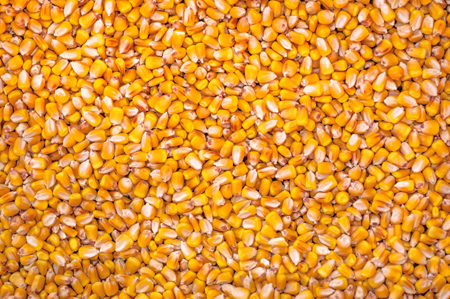Blockage of U.S. Corn to Mexico Not Instantaneous
Category: Grains
 (Agriculture.com) – From the halls of Congress to Chicago commodities markets, President Donald Trump’s goal to renegotiate the North American Free Trade Agreement is causing jitters in agriculture—worsened this week when a senator in Mexico pledged to introduce a bill to require that country’s corn imports to come from Brazil and Argentina, not the U.S.
(Agriculture.com) – From the halls of Congress to Chicago commodities markets, President Donald Trump’s goal to renegotiate the North American Free Trade Agreement is causing jitters in agriculture—worsened this week when a senator in Mexico pledged to introduce a bill to require that country’s corn imports to come from Brazil and Argentina, not the U.S.
In Washington, Senator Chuck Grassley mentioned the pending bill in Mexico to reporters, saying that whether it’s just posturing or not, it was a smart move.
Mexican negotiators have been preparing for the new round of negotiations for weeks, responding to one of the first executive orders from newly inaugurated President Trump.
“They aren’t going to be caught off guard. They aren’t going to go into these negotiations in a weak position,” Grassley told Agriculture.com in a telephone press conference.
Grassley is among several Republican members of the Senate Finance Committee meeting this week with two Trump advisors likely to be part of that process—Trump’s longtime attorney, Jason Greenblatt, and Peter Navarro, a protectionist economist who now heads Trump’s National Trade Council. Navarro, dubbed “The Most Dangerous Man in Trump World?” by Politico, is a critic of U.S. trade policies with China.
Before the meeting, Grassley told reporters about his concerns that agriculture could be hurt in a renegotiated Nafta. For the past two years, Mexico has been the top export market for U.S. corn and, so far in the current marketing year, is buying at an even greater rate than in 2015-16.
“I want the administration to know that it could be harmful to agriculture if we push too hard,” Grassley said.
You might wonder if Mexico can simply quit buying U.S. corn under Nafta.
The short answer is yes, says Chad Hart, an Iowa State University agricultural economist who has studied trade agreements.
“Nafta doesn’t say you can’t do that. We have mechanisms to challenge this under Nafta,” Hart said.
It wouldn’t be instantaneous, however.
“It takes years to negotiate and work these things out,” Hart said. One example is the mandatory country of origin labeling (COOL) law passed by the U.S. Congress that was successfully challenged by Canada, which lost meat exports to the U.S. Mexico joined Canada in the challenge to COOL.
It takes even longer to negotiate trade agreements. Nafta was the dream of President Ronald Reagan, who proposed a North American common market. Negotiations picked up under the administration of George H.W. Bush and the agreement was signed by President Bill Clinton.
But the clock is ticking toward potential confrontation. Trump’s executive order triggers a 90-day window to start renegotiating Nafta.
That process has three potential outcomes, says Hart. The negotiators would decide not to change anything. They could renegotiate and make changes to the existing agreement.
Or they could fail to reach an agreement with the U.S. withdrawing from Nafta completely.
Mexico faces practical barriers to retaliating against U.S. corn exports, which are mostly shipped directly to Mexican terminals by rail. To replace U.S. corn with supplies from South America would require marine transport and shipping corn from Mexico’s ports.
“It’s going to be more painful and more costly,” Hart said.
Hart said there’s enough South American corn to replace U.S. exports, and that any markets lost by exporters from Brazil and Argentina might be replaced by U.S. corn. But the transportation costs for corn in general would likely be higher under that scenario.
“Everybody’s paying a little bit more because of this artificial barrier that’s been created,” Hart said.
Exports aren’t as crucial to the corn market as they are for soybeans. Yet they account for about a fifth of U.S. corn production. Mexico currently buys about a fourth of those corn exports. So far in the current 2016-17 marketing year, the U.S. has sold 410 million bushels of corn to Mexico, ahead of the 360 million ton pace at this time a year ago. The U.S. projects total sales to Mexico this year at 2.2 billion bushels.
So far, partly due to strong exports, corn prices aren’t reflecting current fears about trade disputes.
But the jitters are beginning to show up in rising premiums for corn futures options, as well as other commodities, Hart said. The cost of premiums is determined partly by volatility in markets.
“What you’ve got is a general sense of unease as to what agricultural trade policy will be in the coming years,” Hart said.




